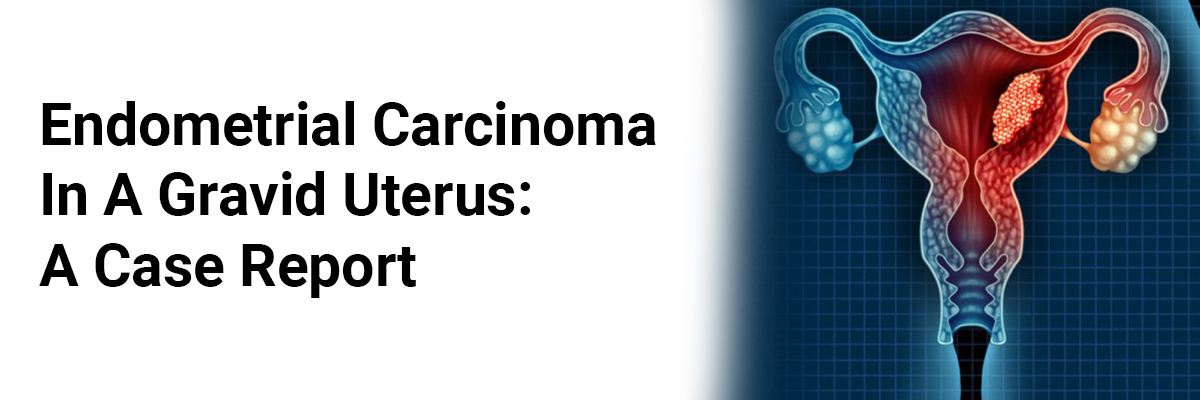
Endometrial Carcinoma in a Gravid Uterus: A Case Report
Abstract
Endometrial carcinoma is
predominantly a postmenopausal disease and is extremely rare during pregnancy
due to the protective effect of progesterone and the typically young age of
pregnant women. This case report presents a rare incidence of endometrial
carcinoma diagnosed in a gravid uterus, highlighting the diagnostic challenges,
management dilemmas, and outcomes.
Introduction
Endometrial carcinoma is the
most common gynecologic malignancy in developed countries, with the majority of
cases occurring in postmenopausal women. Its occurrence during pregnancy is
exceedingly rare, with fewer than 100 cases reported in the literature.
Pregnancy, characterized by high circulating levels of progesterone, is
generally considered protective against the development of endometrial
malignancy. When it does occur, diagnosis is often delayed or incidental, posing
significant challenges in management due to the competing priorities of
maternal treatment and fetal viability.
Case Presentation
A 32-year-old primigravida at
12 weeks of gestation presented with abnormal vaginal bleeding. Her antenatal
course had been unremarkable until this episode. Transvaginal ultrasonography
revealed a viable intrauterine pregnancy with a thickened and heterogeneous
endometrium.
An endometrial biopsy was
performed after careful counselling and consent due to persistent bleeding and
abnormal imaging findings. Histopathological examination revealed
well-differentiated endometrioid adenocarcinoma. MRI confirmed localized
disease confined to the endometrium without myometrial or extrauterine
invasion. The patient had no significant personal or family history of
malignancy.
A multidisciplinary team,
including obstetricians, gynecologic oncologists, and maternal-fetal medicine
specialists, was involved in the case discussion. After thorough counselling
regarding prognosis, maternal-fetal risks, and treatment options, the patient
opted for pregnancy termination followed by definitive management. She
subsequently underwent total abdominal hysterectomy with bilateral
salpingo-oophorectomy. Final histopathology confirmed stage IA, grade 1 endometrioid
adenocarcinoma with no lymphovascular invasion.
Discussion
Endometrial carcinoma in
pregnancy is rare, often detected incidentally or due to persistent abnormal
bleeding. Risk factors may include obesity, polycystic ovary syndrome (PCOS),
and nulliparity, though none were present in this case. Diagnosis is
particularly challenging during pregnancy due to overlapping symptoms such as
bleeding and imaging limitations.
The management of endometrial
carcinoma in pregnancy depends on gestational age, histological grade, stage,
and the patient's desire for fertility preservation. In early-stage, low-grade
cases, conservative management may be considered; however, this must be
balanced against the risk of disease progression. In this case, the decision
for pregnancy termination allowed for definitive surgical management with a
favorable prognosis.
Conclusion
Endometrial carcinoma during
pregnancy is extremely rare and requires a high index of suspicion when
evaluating persistent or unexplained bleeding in early gestation. Early
diagnosis through imaging and biopsy, coupled with individualized,
multidisciplinary management, is crucial for optimal outcomes. This case
underscores the importance of vigilance and careful counselling in managing
rare malignancies in pregnancy.














Please login to comment on this article